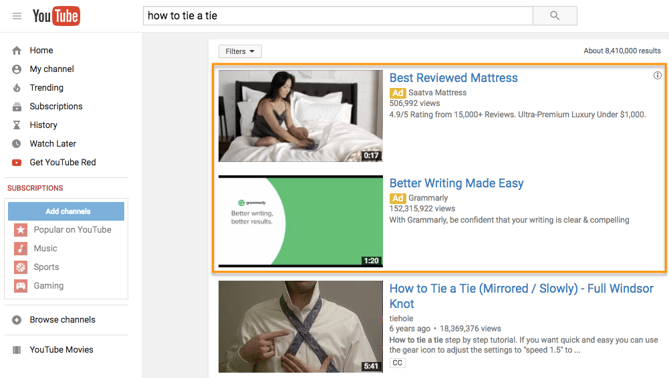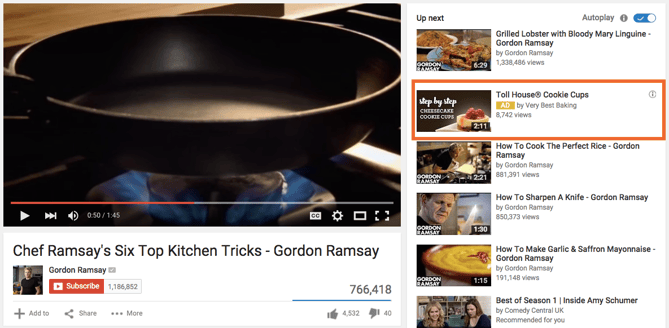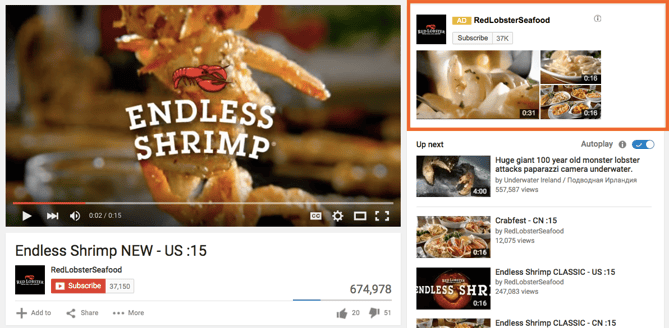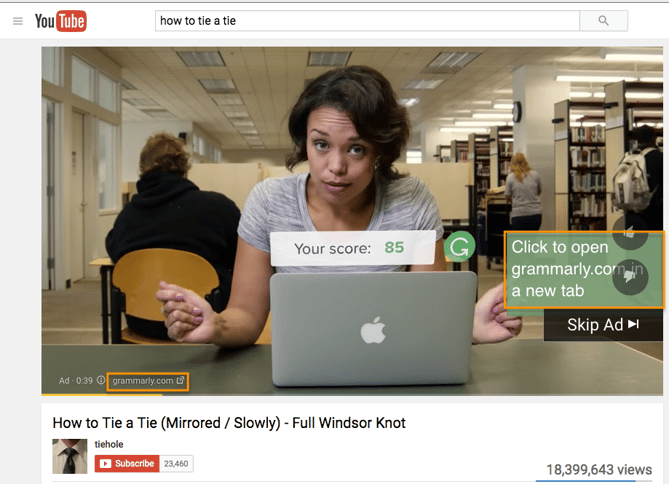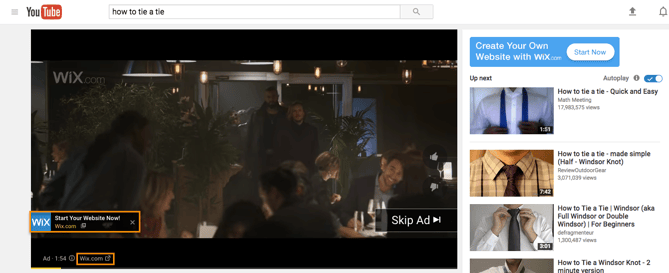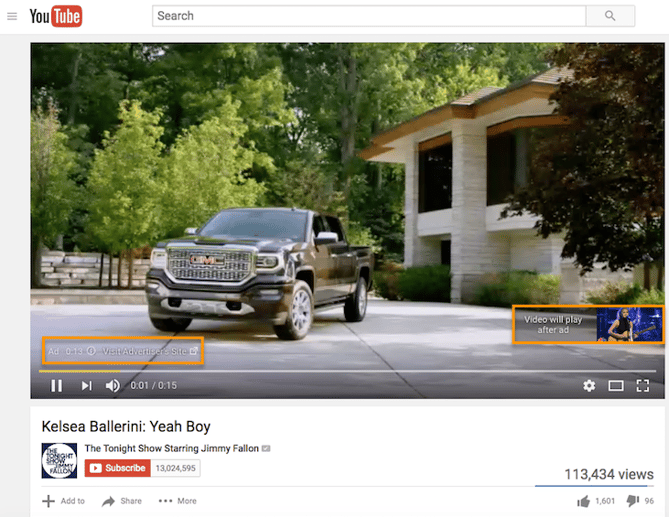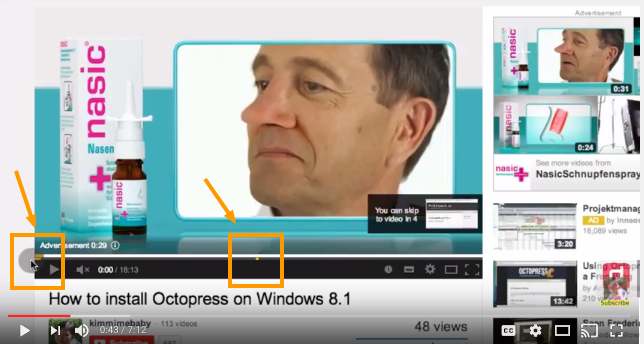What’s New With YouTube video Adverts?
In Jan 2017, Google announced it would create changes to AdWords to permit advertisers to achieve more viewers on YouTube — particularly across mobile devices, where 50 percent of YouTube views take place. Among the changes, it rolled out, possibly the biggest announcement was that advertisers will soon be capable of target viewers based on their Google search history, in addition to their viewing behaviors YouTube was targeting already.
Marketers could now target adverts at people who recently searched for certain services or products to target the video adverts they will be served on the platform. If the content of a video advert is closely related to a search the viewer has been researching, they may be more likely to watch the entire advert or click through the advert to the site.
Keywords are relatively cheaper to target on YouTube than in traditional Google Search: Views price an average of $0.06 per click on YouTube, compared to the average Google Search price per click, which is estimated to be between $1-2. When YouTube targeting contains search history, it might be a more cost-effective method to target your audience with a more engaging form of content — video.
The 3 Types of YouTube Video Adverts
There are three key kinds of Youtube video adverts in which you could invest: TrueView, Preroll, and Bumpers.
1. TrueView Adverts
TrueView adverts are the standard video advert kind on YouTube. Advertisers only pay for TrueView ads when viewers watch or interact with their advert (for instance, by clicking on a call-to-action), and videos could be easily customized to share a variety of content.
Advertisers only pay when a user watches the advert for at least 30 seconds or till the end of the video or if the viewer takes an action, like clicking on a call-to-action. YouTube requires that skippable TrueView adverts be between 12 seconds and 6 minutes in size and that non-skippable TrueView adverts be 15-20 seconds in length.
There are two kinds of TrueView adverts with which you could optimize your YouTube channel:
Video Discovery Advertisements (Beforehand Named In-Show Advertisements)
Video discovery YouTube ads show up on the YouTube homepage, search outcomes pages, and as related videos on YouTube video watch pages.
These adverts appeared after performing a YouTube search:
This display advert appears like a related video on the right-hand video sidebar:
When a user clicks on the advert, the destination video page features a spot on the right-hand column where a companion banner display ad will appear.
In-Stream Adverts
TrueView in-stream ads play before somebody watches the video they have chosen on YouTube. Viewers sometimes have the option to skip the advert after watching it for 5 seconds. You could also make them play anywhere in the Google Display Network (GDN) — or websites that bought Google video advert space.
In-stream adverts let marketers customize video adverts with different CTAs and overlay text, as highlighted in the skippable in-stream ad instance beneath from Grammarly.
Right here’s what another skippable in-stream advert from Wix looks like. In this instance, there’s another CTA from Wix on top of the right-hand video menu display:
What TrueView Videos Can Include
TrueView video campaigns could consist of folks, dialogue, and music that was retrieved with permission — or is considered royalty-free. But it is best not to run a standard promotional commercial. Because these videos could be skipped, you should give your audience a reason to keep watching, and product plugs historically do not get the views you may expect.
Instead, tell a story with the time you have in this video. People love seeing case studies of those who faced a struggle that they could empathize with. It is a source of entertainment that makes your brand memorable and less tempting to skip.
With TrueView adverts, advertisers could gain lots of details about the performance of their adverts for optimization and testing purposes.
Utilizing AdWords, YouTube account managers could collect data on an advert’s completed views, partial views, if the video drives channel subscriptions, clickthrough rates on CTAs, views sourced from a user sharing the content, and views on the brand’s other content that could be attributed to a person initially viewing a video advert.
These actions help advertisers better understand the complete value of their video advert spend and where to allocate budget to rise outcomes.
2. Preroll Adverts
Some in-stream adverts are non-skippable and might play before, mid-roll, or after the main video. These are called Preroll adverts, and they could be 15 to 20 seconds in duration.
This is an instance of a non-skippable video advert before the main content on YouTube:
There are also non-skippable, mid-roll video adverts, which appear midway by a YouTube video that is 10 minutes or longer in length.
Source: PC Daily Tips
What Preroll Videos Can Include
Preroll adverts provide you with just as much freedom as TrueView adverts in their allotted content. You could include people, dialogue, audio, and more elements that you discover greatest represent your brand in 15 to 20 seconds.
As a result of preroll adverts cannot be skipped, these videos are greatest created with a call-to-action (CTA) so you could optimize the attention you do have from the viewer. In other words, encourage viewers to click on your advert and receive something in return. Maybe you have launched a new product or promoting a major event this season and are looking for signups — use this preroll advert to get these clicks.
Keep in mind YouTube sells Preroll video space on a pay-per-click (PPC) basis. Make the click worth it.
3. Bumpers
Bumpers are the third and shortest kind of YouTube video adverts available to you. At just six seconds per bumper, these advert spots play before a viewer’s chosen video.
Bumper video adverts obviously cannot tell a good-enough story in just six seconds, however, they make terrific enhances to bigger video campaigns on a new product launch or event. Just make sure to use this six seconds wisely, and embody only the components of your brand you want your audience to keep in mind.


